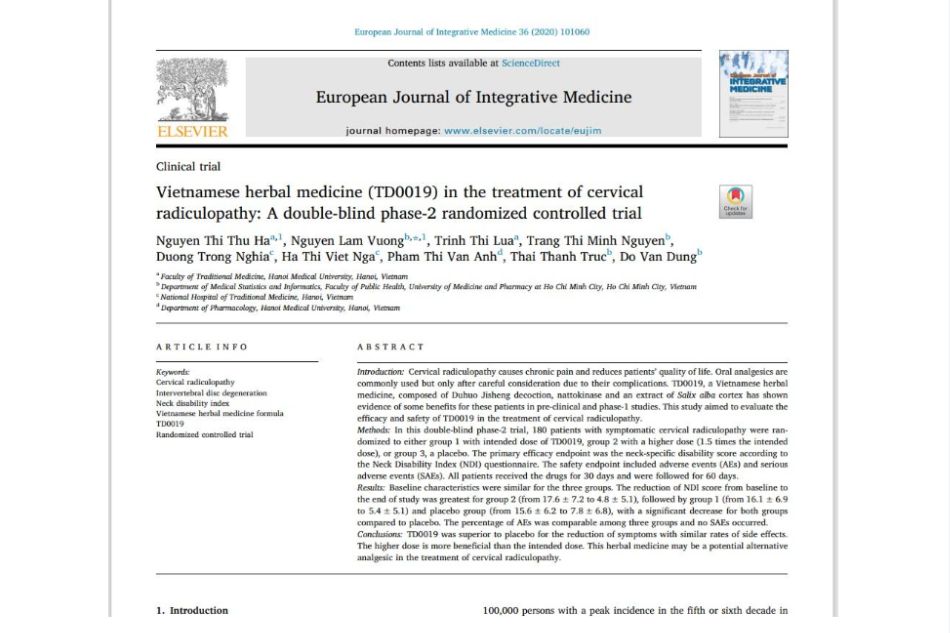Help to promote blood circulation, reduce symtoms of shoulder and neck pain and tiredness, lower the risk of thrombosis or embolism.
USED FOR
Adult with:
* Shoulder and neck piradiculopathy.
* Vestibular disorders causing headache, dizziness, vertigo, insomnia.
* After stroke due to embolism or heart attack.
* Blood blockage due to thrombosis.
Vietnamese herbal medicine in the treatment of cervical radiculopathy: a randomized controlled trial (the report published on http://www.elsevier.com/locate/eujim)
Background: Cervical radiculopathy causes chronic pain and reduces patients’ quality of life. There is currently no harmonization in the treatment of this disease. Oral analgesics are commonly used but with careful consideration due to their complications. Therefore, herbal medicine has been frequently considered as a complementary or an alternative approach to reduce side effects of analgesics. This study aimed to evaluate the efficacy and safety of TD0019, a Vietnamese herbal medicine, in comparison with placebo.
Methods: In this double-blind phase 2 trial, we equally randomized 180 patients with symptomatic cervical radiculopathy to group 1 with intended dose of TD0019, group 2 with 1.5 times the intended dose, and placebo group. All patients received the same exercise intervention. The primary efficacy endpoint was the neck-specific disability score according to the Neck Disability Index (NDI) questionnaire. The safety endpoint included adverse events (AEs) and serious adverse events (SAEs). All patients received the drugs for 30 days and were followed for 60 days.
Results: Baseline characteristics were balanced in the three groups, with an average age of 59 years, and 45% were male. The reduction of NDI score from baseline to the end of study was greatest in group 2 (from 17.6±7.2 to 4.8±5.1), followed by group 1 (from 16.1±6.9 to 5.4±5.1) and the placebo group (from 15.6±6.2 to 7.8±6.8). There was significantly decrease of NDI score of both group 1 and 2 compared to placebo, when accounting for repeated measurements of the endpoint. The number of AEs was comparable among groups (six in the placebo group, eight in group 1, and seven in group 2). There were no SAEs occurred.
Conclusion: In patients with cervical radiculopathy, TD0019 was superior to placebo for the reduction of symptoms with similar rates of side effects. This herbal medicine may be a potential alternative analgesic in the treatment of cervical radiculopathy.
We move to phase III of clinical trials in Central Tradition Medicine Hospital in Viet Nam.


 English
English 中文 (中国)
中文 (中国) 한국어
한국어